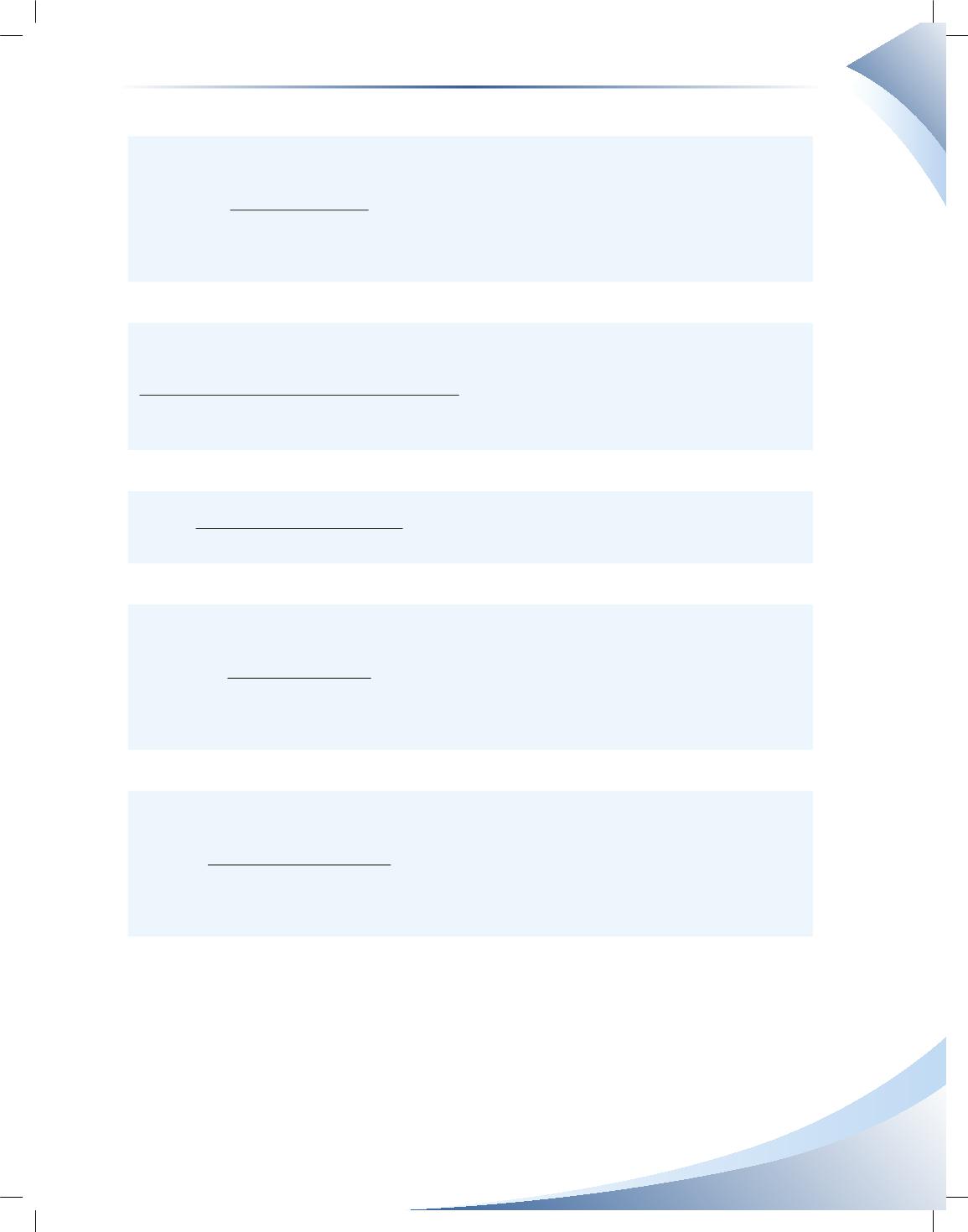
Appendix II
Review Exercise Solutions
435
Current Ratio
Current Assets
Current Liabilities
Measures the ability of the company to pay
current debt over the next 12 months (specifi-
cally, the number of times current assets can
cover current debts). Generally, the higher the
number the better. If the ratio is too high, it indi-
cates inefficient use of capital as current assets
generally have the lowest returns.
Quick Ratio (or Acid Test)
Cash + Short-Term Investments + Accounts
Receivable
Current Liabilities
The number of times the most liquid assets (e.g.
cash, short-term investments, and accounts
receivable) can cover immediate debts (usually
90 days). Generally, the higher the number the
better. If the ratio is too high, it indicates ineffi-
cient use of capital (see current ratio).
Debt-to-Equity Ratio
Total Liabilities (Debt)
Total Shareholders’ Equity
Used by lenders to examine their risk relative
to the owners’ risk. Some debt is good, but too
much can cause financial distress.
Inventory Turnover
Cost of Goods Sold
Average Inventory
Calculates the number of times inventory is
replenished within one year. Generally, the lower
the inventory turnover, the less times per year
inventory is being replenished which results
in elevated holding costs. Inventory turnover
should be compared to similar periods in a
cyclical business.
Inventory Days on Hand
365
Inventory Turnover Ratio
Calculates the average number of days the
current inventory will last, and how well the
inventory is being managed. Generally, the lower
the inventory days on hand, the less the holding
costs (e.g. shrinkage, interest, etc.). Inventory
days on hand should be compared to similar
periods in a cyclical business.
Note
The purpose of ratio analysis is to help the reader of financial statements ask the appropriate ques-
tions and understand which issues need to be addressed. Keep in mind that no single ratio will be
able to provide the complete story. Much like a puzzle, you need all the pieces to see the whole
picture.


